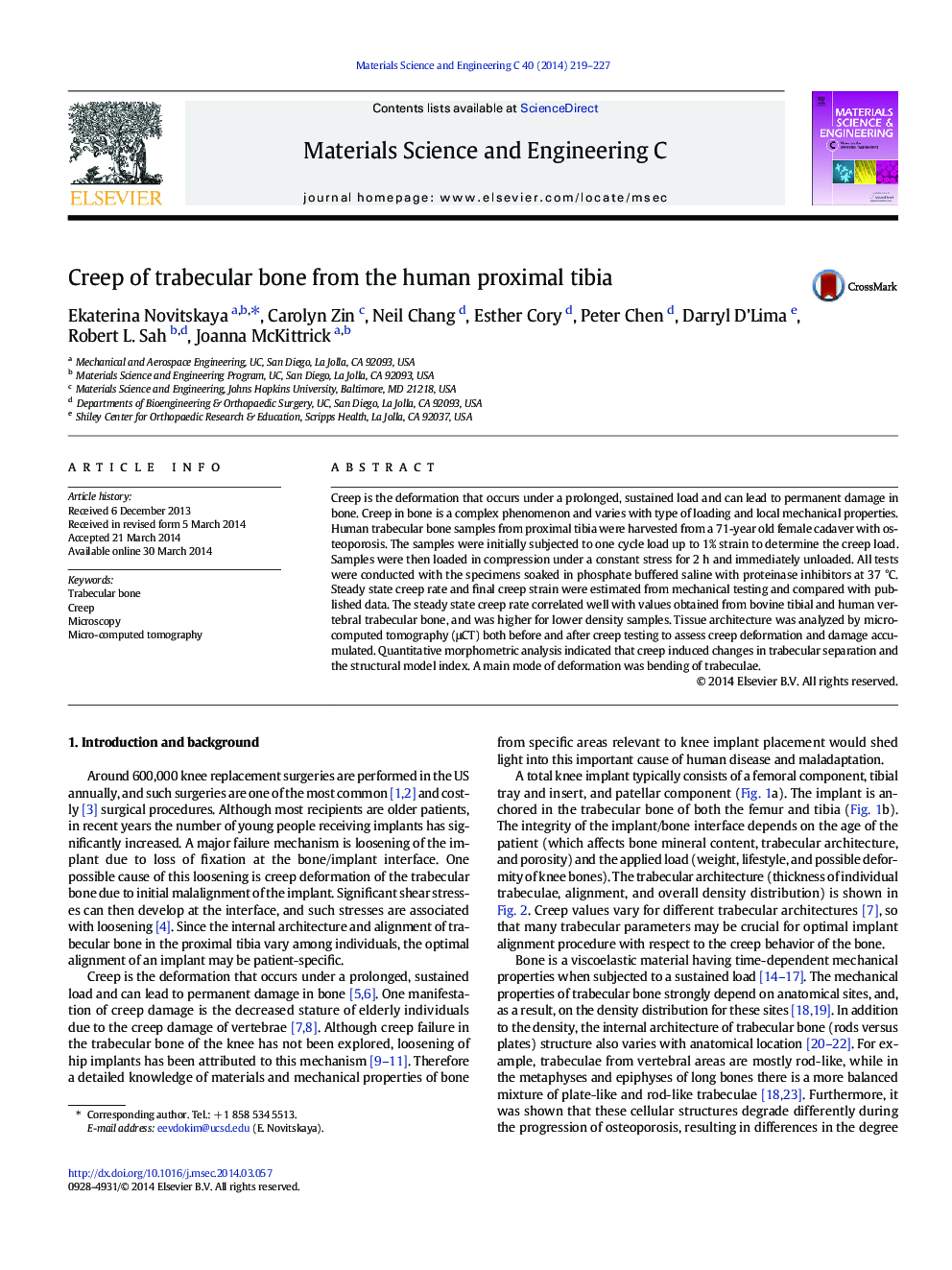| کد مقاله | کد نشریه | سال انتشار | مقاله انگلیسی | نسخه تمام متن |
|---|---|---|---|---|
| 1428335 | 1509181 | 2014 | 9 صفحه PDF | دانلود رایگان |
• Compressive creep tests of human trabecular bone across the tibia were performed.
• The creep rate was found to be inversely proportional to the density of the samples.
• μ-computed tomography before and after testing identified regions of deformation.
• Bending of the trabeculae was found to be the main deformation mode.
Creep is the deformation that occurs under a prolonged, sustained load and can lead to permanent damage in bone. Creep in bone is a complex phenomenon and varies with type of loading and local mechanical properties. Human trabecular bone samples from proximal tibia were harvested from a 71-year old female cadaver with osteoporosis. The samples were initially subjected to one cycle load up to 1% strain to determine the creep load. Samples were then loaded in compression under a constant stress for 2 h and immediately unloaded. All tests were conducted with the specimens soaked in phosphate buffered saline with proteinase inhibitors at 37 °C. Steady state creep rate and final creep strain were estimated from mechanical testing and compared with published data. The steady state creep rate correlated well with values obtained from bovine tibial and human vertebral trabecular bone, and was higher for lower density samples. Tissue architecture was analyzed by micro-computed tomography (μCT) both before and after creep testing to assess creep deformation and damage accumulated. Quantitative morphometric analysis indicated that creep induced changes in trabecular separation and the structural model index. A main mode of deformation was bending of trabeculae.
Journal: Materials Science and Engineering: C - Volume 40, 1 July 2014, Pages 219–227
